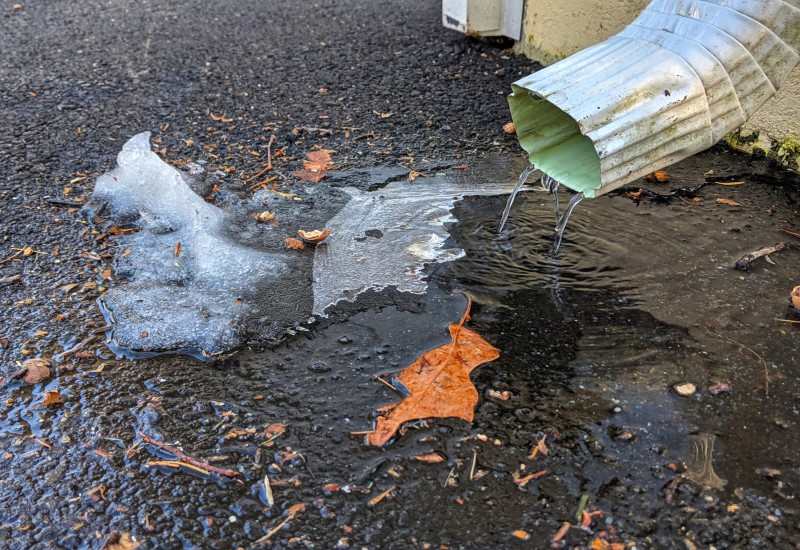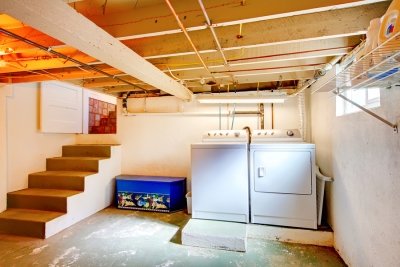When the Springtime Thaw Leads to a Wet Basement
 Each year, when the snow melts, it turns to water and begins to drain. Sometimes, a rapid thaw can result in standing water in yards, because the subsoil is still frozen and won’t allow the water to percolate below the surface. Unfortunately, the subsoil around your house will thaw more quickly than the soil in the rest of the yard, and that can lead to a flooded basement. How can you prevent this from happening? If it’s already happened, what can you do about it?
Each year, when the snow melts, it turns to water and begins to drain. Sometimes, a rapid thaw can result in standing water in yards, because the subsoil is still frozen and won’t allow the water to percolate below the surface. Unfortunately, the subsoil around your house will thaw more quickly than the soil in the rest of the yard, and that can lead to a flooded basement. How can you prevent this from happening? If it’s already happened, what can you do about it?
How does water get into your basement in the first place? There’s more to it than you might realize. First, as mentioned above, the warmer ground next to your house and foundation invites water to seep into it when the rest of the ground is still frozen and hard. Water will always follow the path of least resistance, flowing downhill, and from the surface of the earth into the soil. This can be a problem when it’s heading for your basement, and the problem is exacerbated by the fact that, in order to build your house, the builder had to dig a big hole in the ground to lay the foundation. This excavation disturbed the soil, and even when the builder backfills earth into the space around your completed footings and foundation, it will never be as compact as it was before the soil was disturbed. Instead, it will have air pockets, allowing water to trickle down and find a spot to rest beside your basement walls.
Of course, soil always contains some moisture, but it’s particularly saturated as you near the water table. When the spring thaw causes the water table to rise, it can cause issues for your basement. The groundwater may have been dammed up by your home’s construction, but as the water table rises it will push against your foundation and basement. This underground water can erode the soil around your foundation and cause structural problems, sometimes so bad that they crack the walls or the floor. Hydrostatic pressure builds up around the walls and floor, and if there’s any tiny crack, the water will be forced through it. If the pressure is strong enough, the water can even seep in through the concrete itself. It can also enter your home through the mortar joints between bricks, blocks, and stones.
There are several factors to examine when trying to prevent basement flooding. You’ll need to make sure your yard is properly graded, and none of your drainage pipes are blocked. Leaky downspouts or gutters can cause water to back up and get into the basement, as can any ruts that direct runoff toward the foundation. Egress windows can also let in water if they’re not properly sealed, especially if cracks have formed around the window wells. Once you’ve solved any problems with things like poor grading that diverts water into your foundation, leaky windows, or clogged gutters and pipes, you’ll need to repair any cracks in the basement walls and floor.
If it seems like your foundation is sound, and yet you still have moisture in your basement, you may be facing a bigger problem than a few cracks in the wall or gaps in the mortar joints. The seepage may be caused by hydraulic pressure, which can necessitate excavating and waterproofing your basement. Installing a sump pump may also be a logical step, and you’ll want to make sure the sump pump drain carries water as far as possible away from your foundation. A sump pump is useful because it carries water outside, but also because it’s an efficient way to keep the space under your house dry, preventing mold and mildew from growing. Internal waterproofing, including an internal drainage system, may also be recommended to keep your basement and foundation dry. This solution may be particularly crucial in areas with a high water table, or where poor soil absorption is an ongoing concern.
It’s smart to be proactive in keeping your basement safe from the water inherent in a springtime thaw. This may be something you can do on your own, but more likely it’s a job for which you’ll need professional help. A wet basement can be a serious issue, causing you to lose personal possessions and the use of valuable living space. What’s more, moisture in the basement can lead to mold and mildew, which can be serious health hazards. Taking precautions ahead of time to make sure your basement is waterproof will save money and problems in the long run, especially when you call in a professional to inspect your space and come up with a plan to address your home’s unique issues.
When you’re ready to ensure that your basement is waterproof, or if your basement has already flooded and needs repair and restoration, call Budget Waterproofing for help. At Budget Waterproofing, we’ve got more than 55 years of experience servicing both commercial and residential customers throughout Maryland. We’re proud of our craftsmanship and confident in our skills, and all of our technicians are fully licensed and insured. Whether you need basement waterproofing, a drainage system, crawl space waterproofing, or egress window installation, we’ve got you covered, with the experience and skills necessary to improve your basement and protect your family. For more information, contact us today!


